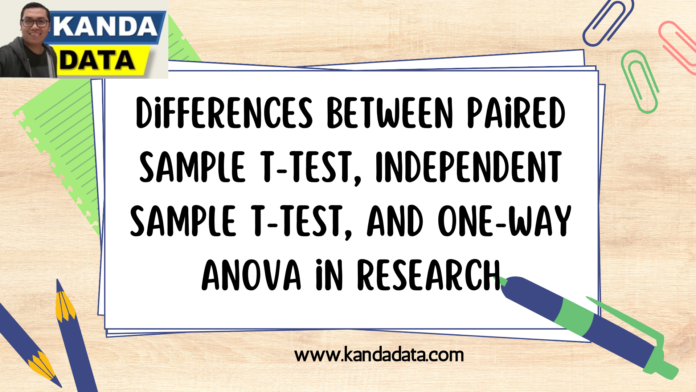Differential testing is aimed at determining the mean differences in the tested sample groups. In practice, paired sample t-test, independent sample t-test, and one-way ANOVA are often used to test means in more than one sample group.
Understanding the differences in these differential tests is crucial for researchers to ensure unbiased analysis results and representative research conclusions. In this context, Kanda Data writing about the distinctions among these three differential tests.
Assumptions Prerequisite for Differential Tests
Both paired sample T-test, independent sample T-test, and one-way ANOVA must meet the assumption that the data is normally distributed, requiring researchers to conduct normality tests. Commonly chosen tests include the Shapiro-Wilk test and the Kolmogorov-Smirnov test.
To perform these tests, we can formulate statistical hypotheses consisting of null and alternative hypotheses. Statistical hypotheses can be formulated as follows: (a) Ho: Data is normally distributed; and (b) Ha: Data is not normally distributed.
After conducting normality tests using one of the selected tests, attention should be paid to the critical alpha level (usually set at 5%). If the test results indicate a significance value greater than 0.05, the null hypothesis is accepted. Consequently, it can be interpreted that the data is normally distributed.
Especially in one-way ANOVA, an additional test is required, namely the homogeneity test. The purpose of the homogeneity test is to determine whether the data is homogeneous or not. The assumption for the one-way ANOVA is that the data is homogeneous. Therefore, in one way ANOVA test, in addition to normality testing, homogeneity testing is also conducted.
Differences Among Paired Sample T-Test, Independent Sample T-Test, and One-Way ANOVA
In principle, differential testing can involve two sample groups and more than two sample groups. These tests are often elaborated by many researchers to observe phenomena in the field.
When observing differential testing in two sample groups, the T-test can be used. However, when conducting differential testing in more than two sample groups, one-way ANOVA is appropriate.
For example, a researcher studying the difference in rice production between farmer group X and farmer group Y can use the T-test. In this case, there are two sample groups namely members of farmer group X and members of farmer group Y.
If, for instance, we want to test the difference in daily milk production per head in cooperatives A, B, C, and D, then one-way ANOVA can be employed. In this case, there are four sample groups: members of cooperatives A, B, C, and D.
Differences Between Paired Sample T-Test and Independent Sample T-Test
Furthermore, the T-test is divided into two, namely paired sample T-test and independent sample T-test. Paired sample T-test assumes that the tested differences are based on the same or paired samples.
For example, when a teacher wants to test the difference in student grades between the existing learning method and a new learning method. In independent sample T-test, the number or names of the samples used do not have to be the same. Researchers can use independent samples to test their differences.
Well, hopefully, with the discussions I have conveyed in the preceding paragraphs, it will strengthen your understanding of the differences in using paired sample T-test, independent sample T-test, and one-way ANOVA.
This article is what I can write on this occasion, hopefully, it is beneficial and adds value to the knowledge for those who need it. Stay tuned for the next educational article from Kanda Data next week, thank you.

